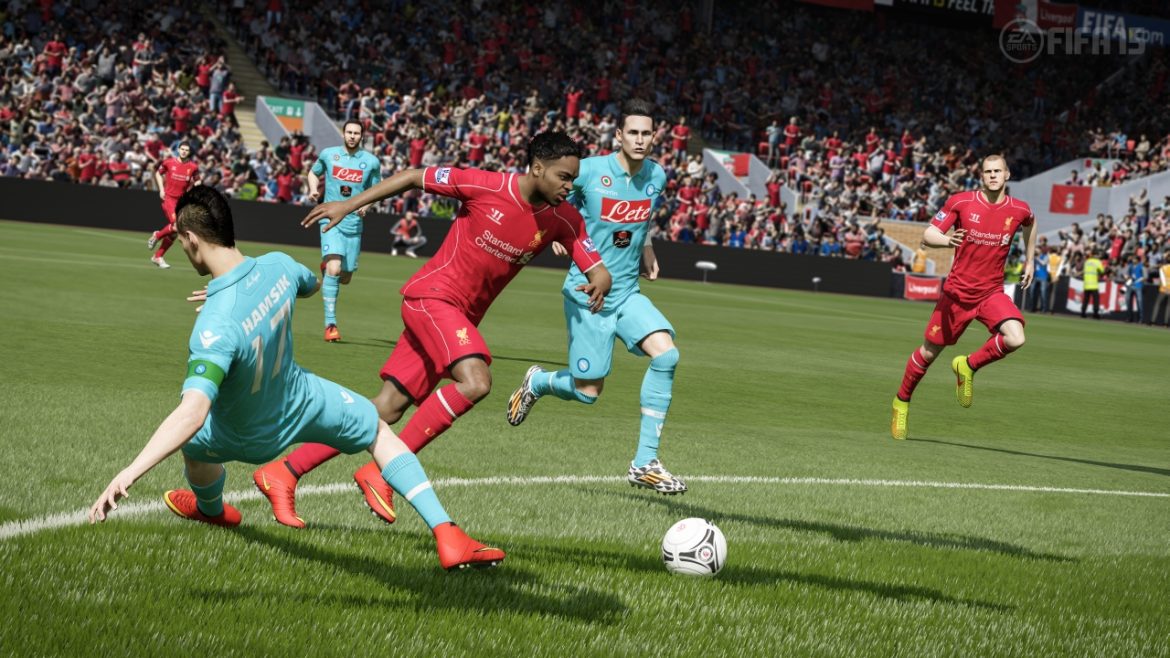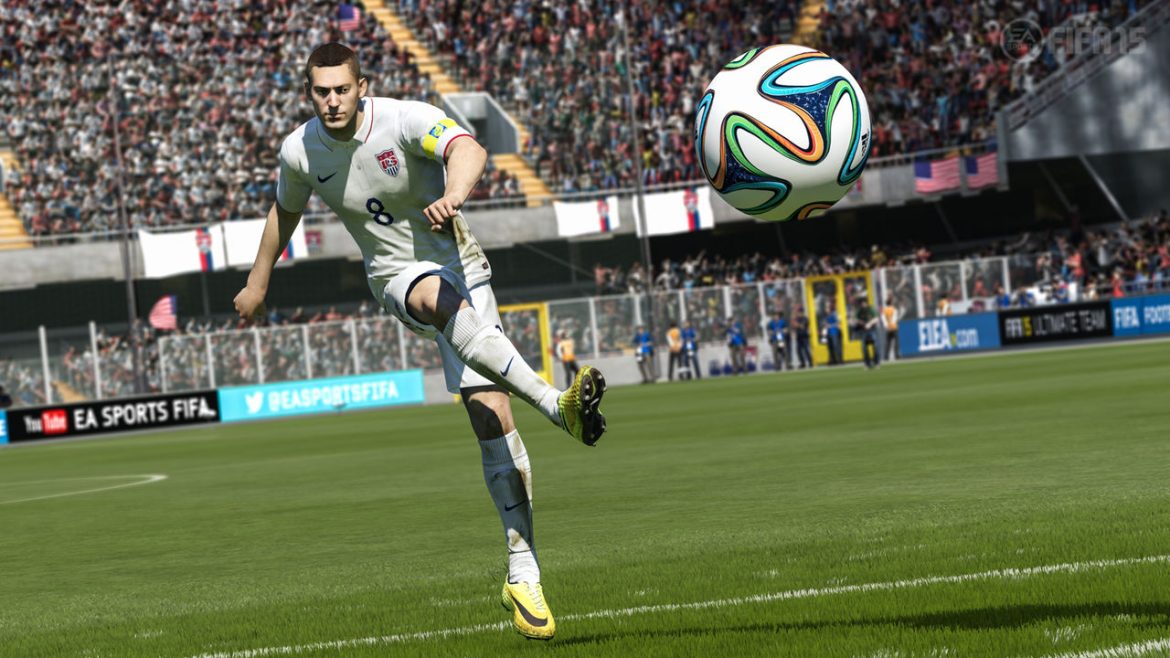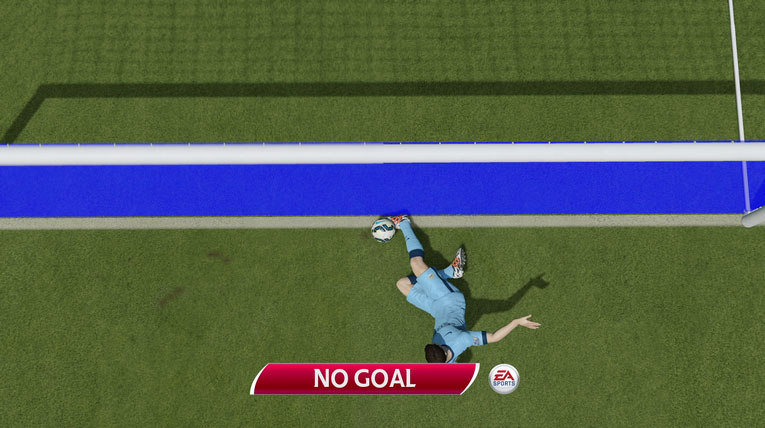TL;DR
FIFA 15 brings a stunningly realistic TV-like presentation to the pitch, with improved player models, animations, and ball physics making matches feel more immersive. Gameplay has been rebalanced for more accessible, goal-scoring action and less overpowered defenders, while goalkeepers show more personality. Though the AI still has room for improvement, and minor graphical differences exist between PS4 and Xbox One, FIFA 15 is a strong step forward for the series, offering a polished and engaging football experience. Want to know the subtle PS4 vs. Xbox One differences? Dive into the full review!
After holding a top position in the game charts for eight weeks this year, FIFA 15 remains a compelling title, offering engaging entertainment during the autumn season.
Each year, EA Sports releases a new iteration of its flagship sports games. These updates often involve incremental adjustments. While PR emphasizes enhanced AI and more realistic graphics, the core gameplay remains familiar. With the 2015 sports titles now available, we previously reviewed NHL 15, which proved surprisingly enjoyable despite some feature omissions. Now, we turn to FIFA 15, the first in the series to be developed from the ground up for next-gen consoles (Xbox One and PS4) utilizing the Ignite engine.
The most immediate observation is the increasingly realistic TV-style presentation. Leveraging improved processors and expanded memory, the game visually approximates a live HD football broadcast at a glance. However, closer inspection reveals the inherent limitations of video game graphics. While face models are significantly improved, they still require further refinement to achieve true realism, even with their enhanced resolution. Player movements have also seen substantial upgrades, allowing for greater recognition of star players like Zlatan and Ronaldo. Another notable detail is the enhanced expression of player emotions through body language, such as arm movements and gestures reminiscent of the Italian league. EA has focused on refining ball physics and player handling, enabling more realistic collisions and interactions. For instance, players from the same team can now realistically impede each other when contesting the ball. A poorly timed pass can also force a player to receive it on their weaker foot, leading to a loss of balance. While these are not transformative changes, they contribute to a more immersive and enjoyable experience.
EA continues to excel at creating authentic match-day atmosphere and capturing the energy of major football events. The crowd visuals are improved, displaying more individual animations and movement. The commentary team generally performs well, although occasional oversights can occur (e.g., stating that a match is “one-sided” when the score is 10-0). One significant enhancement is a rebalancing of the gameplay, resulting in a more aggressive style with easier goal-scoring opportunities and increased defensive challenges. In previous iterations, defenders were exceptionally strong, intercepting passes with ease. This necessitated long-range shots and intricate dribbling maneuvers to create scoring chances. While some players preferred this style, the new approach offers a more accessible experience with spectacular headers, volleys, and finesse shots. A competent team can quickly adapt and begin competing effectively against the AI or other players. Goalkeepers also demonstrate more nuanced behavior, with top-tier players like Tim Howard exhibiting distinct characteristics compared to lower-league counterparts.
FIFA 15 represents a positive step forward, delivering the most visually appealing and mechanically advanced iteration to date. The game is replete with various modes for both local and online play, with online matches generally performing smoothly. However, further advancements in AI and player intelligence are still desired. Football games continue to grapple with fundamental issues that have persisted for over a decade. Players require greater mobility and more realistic tactical awareness. For example, players should anticipate the trajectory of an out-of-bounds ball and proactively reposition themselves to become available. Currently, players often remain static, resembling cones, and the player nearest the ball is arbitrarily assigned possession. Similar issues affect passing and player positioning. Frequently, well-placed passes are missed due to a player’s failure to take a single step to meet the ball, allowing an opponent to intercept it. Such occurrences are unduly frequent for professional-level football.
PS4 or Xbox One?
EA Sports maintains a close partnership with Microsoft regarding FIFA 15, particularly with initiatives like eSvenskan. Officially, the PS4 and Xbox One versions are considered “completely identical.” However, our testing revealed subtle differences favoring the PS4. While not substantial, the Xbox One version exhibits a lack of certain softening effects in the graphics and noticeable frame rate dips during replays, particularly when zoomed in with more complex visuals. Though the disparity is minor, the PS4 version offers a slightly smoother and more visually refined experience. Conversely, the Xbox One version includes 14 exclusive players in FUT (FIFA Ultimate Team), which may compensate for the graphical differences for some users.
Interestingly, FIFA 15 is available on nearly every format, including the older Wii, but currently not on the Wii U. This decision likely reflects the significant installed base of Nintendo’s previous-generation console compared to the lower sales figures of its successor. This is unfortunate.
In conclusion, FIFA 15 on next-gen consoles is a worthwhile upgrade. It represents another step towards a more realistic and engaging football simulation, balancing visual fidelity with an accessible arcade feel and increased emphasis on goal-oriented gameplay. While improvements in AI-driven “football thinking” are still needed, we anticipate continued progress in future editions as developers further harness the capabilities of next-generation hardware. A recommended purchase for dedicated football enthusiasts.



